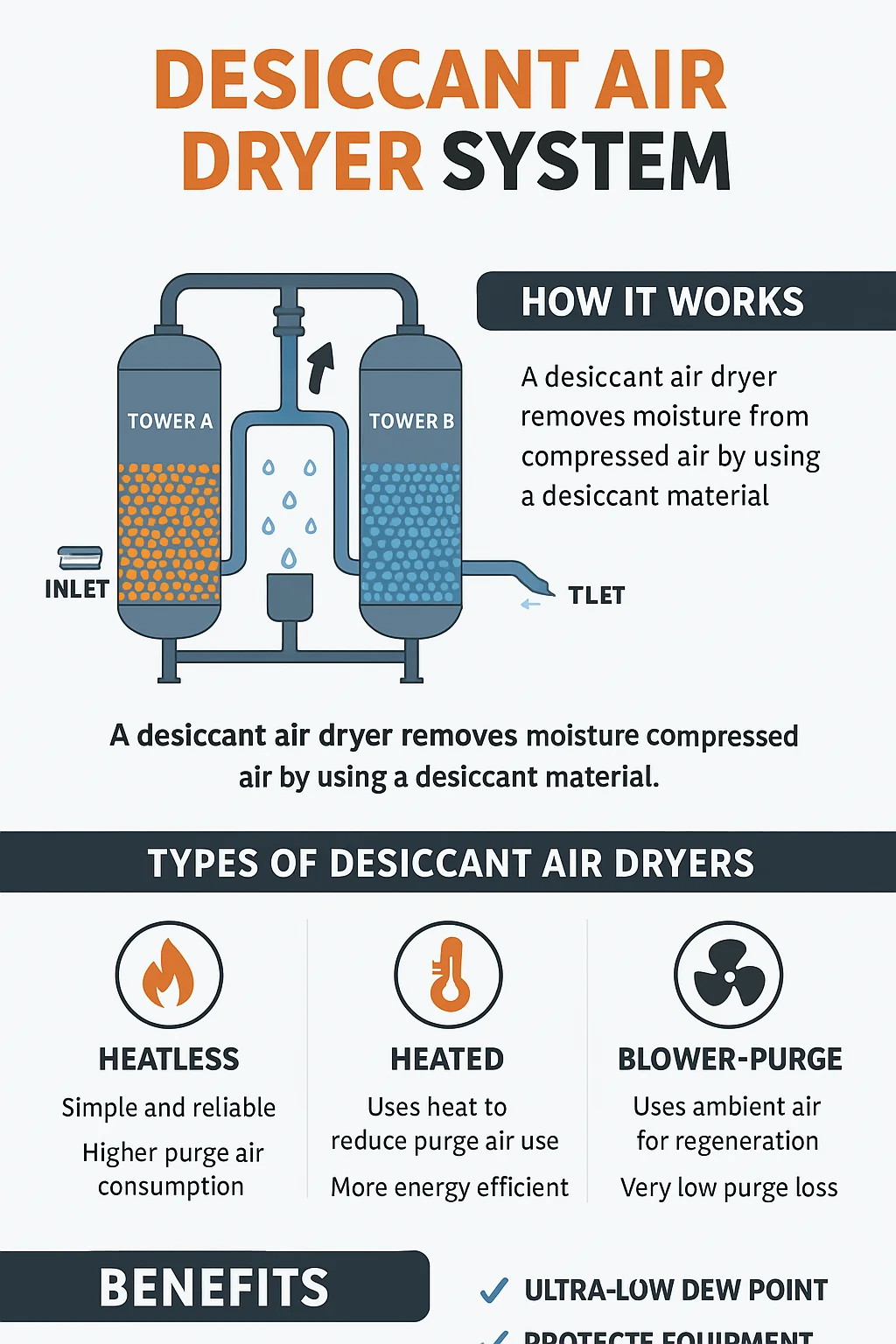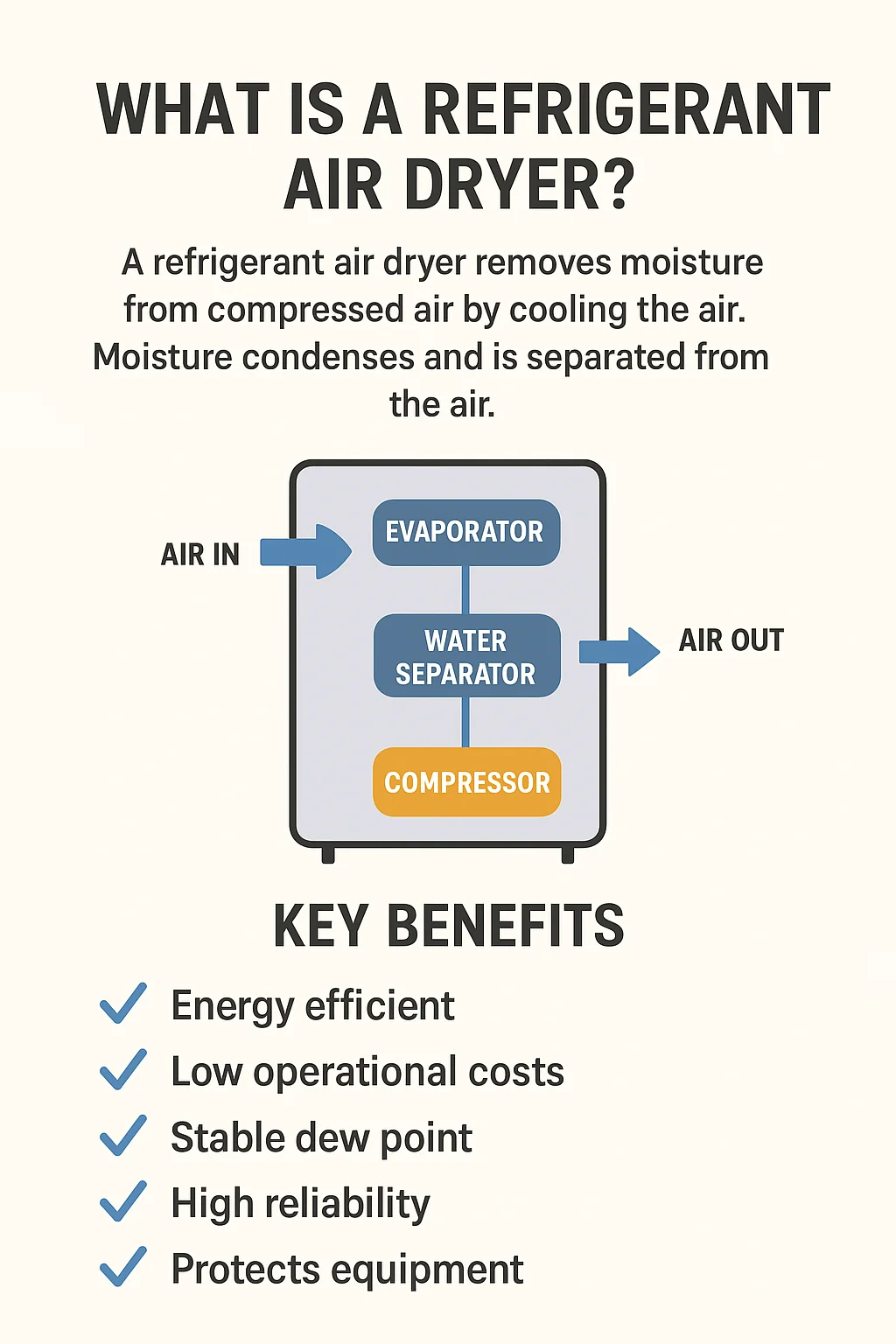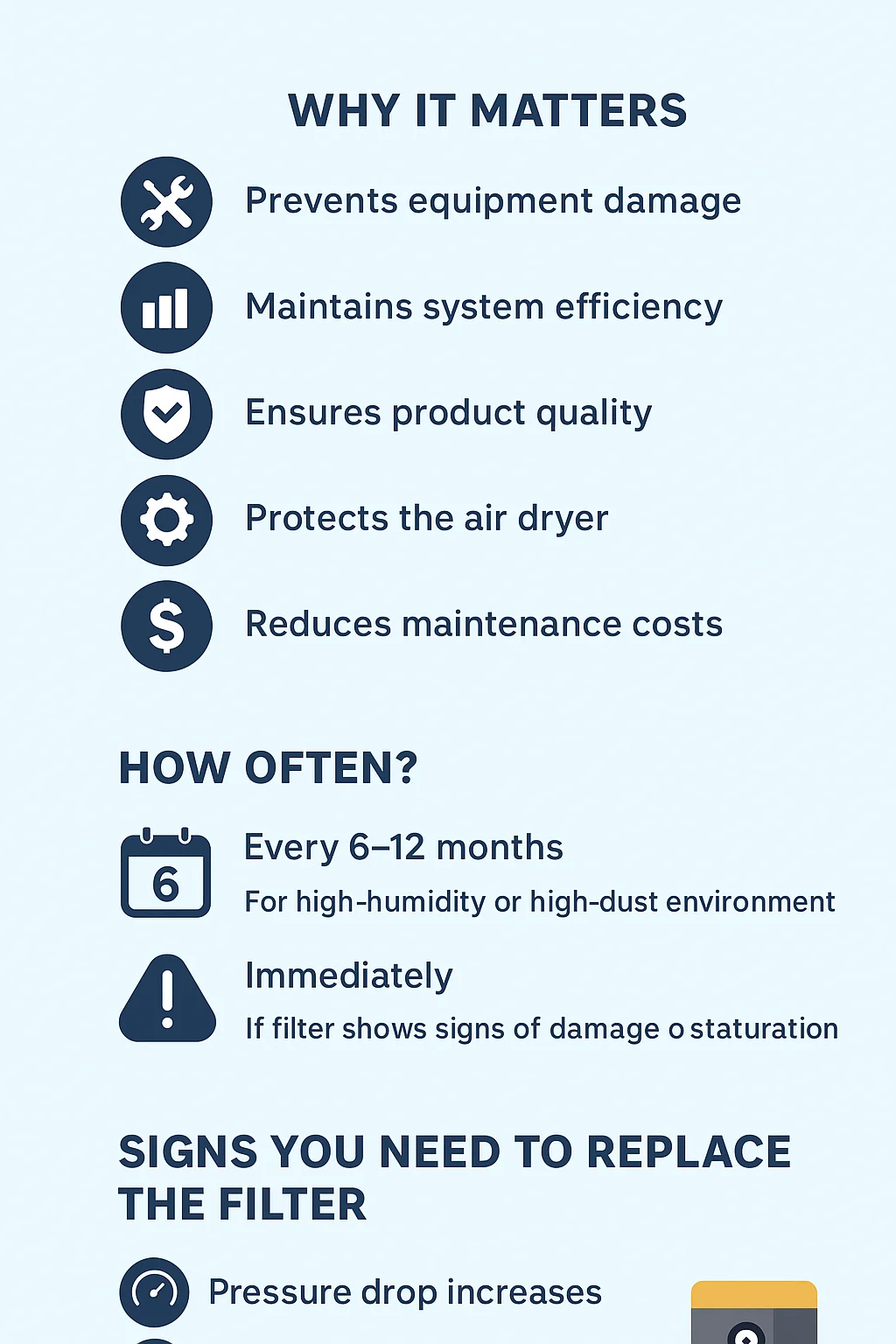Introduction to Plate Heat Exchanger Refrigerated Air Dryers
In modern industrial environments, clean and dry compressed air is essential for optimal system performance. To achieve this, air dryers play a vital role—especially plate heat exchanger refrigerated air dryers. Compared to traditional shell-and-tube dryers, the plate heat exchanger refrigerated air dryer stands out as a next-generation solution with notable benefits in efficiency, space-saving, and longevity.
As industries demand smarter, smaller, and more sustainable technologies, the plate heat exchanger refrigerated air dryer has become a top choice. But what makes it so effective compared to shell-and-tube models?
What Is a Plate Heat Exchanger Refrigerated Air Dryer?
A plate heat exchanger refrigerated air dryer is a compressed air drying system that uses a compact series of metal plates to facilitate heat exchange between compressed air and refrigerant. Unlike conventional shell-and-tube dryers, this model is designed for higher thermal efficiency, smaller footprint, and better anti-corrosion performance.
The plate heat exchanger design increases contact surface area and turbulence, enhancing the cooling and dehumidifying performance significantly.
Plate Heat Exchanger Refrigerated Air Dryer vs. Shell-and-Tube Dryers
Let’s dive into the key advantages of using a plate heat exchanger refrigerated air dryer over traditional shell-and-tube dryer:
1. Higher Heat Transfer Efficiency
One of the biggest advantages of a plate heat exchanger refrigerated air dryer is its exceptionally high heat transfer coefficient. Due to the thin plates and turbulence created by their arrangement, heat exchange is 3 to 5 times more efficient than in a shell-and-tube configuration. This results in:
Faster moisture removal
Lower energy consumption
Greater cooling capacity with smaller components
This enhanced efficiency means better performance even under high air flow conditions.
2. Compact Size and Lightweight Design
Compared to bulky shell-and-tube dryers, plate heat exchanger refrigerated air dryers are remarkably compact and lightweight. The superior heat transfer capability allows for smaller designs that occupy less floor space. This makes installation easier, especially in space-constrained environments such as:
Mobile units
Laboratories
Containerized compressor stations
Industrial users benefit from both reduced installation cost and better space utilization.
3. Corrosion Resistance and Longer Lifespan
Shell-and-tube dryers often use carbon steel for the outer shell, which is prone to rust over time—even with surface treatments. Rust particles can:
Block drainage systems
Cause internal leaks in the evaporator
Contaminate downstream equipment
In contrast, plate heat exchanger refrigerated air dryers usually use stainless steel plates, which are:
Rust-resistant
Easier to clean
More durable in harsh environments
This makes them ideal for industries like pharmaceuticals, food processing, marine, and electronics, where air purity and durability are critical.
4. Lower Maintenance Costs
Because of their simplified design, plate heat exchanger refrigerated air dryers require less maintenance:
No large tubes to clean
No rust deposits to remove
Easier access to internal components
Fewer breakdowns and longer service intervals translate to lower total cost of ownership over time.
5. Broad Industry Compatibility
Thanks to their resistance to corrosion, compact footprint, and high thermal performance, plate heat exchanger refrigerated air dryers are widely used across:
Food & Beverage
Pharmaceutical Manufacturing
Electronics and Semiconductor Plants
Marine and Offshore Engineering
Chemical and Petrochemical Facilities
This adaptability is unmatched by most traditional dryers.
Frequently Asked Questions (FAQ)
What makes a plate heat exchanger refrigerated air dryer more efficient?
The plate design increases heat exchange surface area and promotes turbulence, improving thermal efficiency by 3–5 times compared to shell-and-tube dryers.
Are plate heat exchanger dryers more expensive?
Initial costs may be slightly higher, but they save money over time through lower energy bills, less maintenance, and longer service life.
Do they work in high-humidity environments?
Yes. Their stainless steel construction and superior drainage systems make them ideal for humid or corrosive conditions.
How often do they need maintenance?
Thanks to their rust-resistant components and simpler design, they typically require maintenance only once or twice a year.
Can they replace existing shell-and-tube dryers?
Absolutely. Many industries are upgrading from outdated dryers to plate heat exchanger models for better performance and energy savings.
Conclusion: Why Choose a Plate Heat Exchanger Refrigerated Air Dryer?
The plate heat exchanger refrigerated air dryer is a clear upgrade over the shell-and-tube alternative. It offers:
Superior heat exchange efficiency
Compact and lightweight design
Corrosion resistance for longer lifespan
Lower operating and maintenance costs
Wider industry applicability
For businesses seeking to modernize their compressed air systems, reduce energy consumption, and ensure consistent air quality, the plate heat exchanger refrigerated air dryer is the most logical and future-proof investment.
Related products:
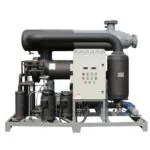
The 3885 CFM refrigerated air dryer (water cooled) is a high-capacity industrial solution designed for removing moisture from large-scale compressed air systems. Built for continuous and demanding operation, this water-cooled unit ensures a steady dew point and maximum system protection. Whether you're operating in petrochemical, steel, manufacturing, or pharmaceutical industries, the 3885 CFM refrigerated air dryer delivers superior drying performance and energy efficiency.
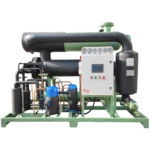
The 4238 CFM refrigerated air dryer (water cooled) is a high-capacity, industrial-grade dryer designed to eliminate moisture from large compressed air systems. Built with a powerful water-cooled refrigeration circuit, this dryer ensures reliable and continuous moisture removal with a stable pressure dew point. For industries that demand high airflow rates and dependable air quality, the 4238 CFM refrigerated air dryer (water cooled) is the ideal solution.
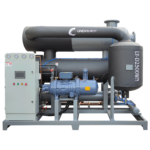
The 8830 CFM refrigerated air dryer (water cooled) is a top-tier industrial solution engineered to remove moisture from large-scale compressed air systems. Built for ultra-high capacity applications, this dryer ensures consistently dry air with a stable dew point and superior thermal control using an advanced water-cooled condenser system.


